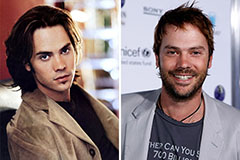Portrait painting is a captivating art form that seeks to depict the very essence of a subject. Masterful artists utilize a range of techniques to translate not only the physical features but also the inner spirit of their sitters. By means of careful scrutiny and a deep insight into human feelings, portrait painters generate works of art that are both faithful and poignant.
A authentic portrait is more than just a resemblance; it's a window into the heart of the person being portrayed. Famed portrait painters over history have deposited behind a wealth of masterpieces that continue to inspire viewers today.
Brushstrokes and Emotion: Unveiling the Soul Through Paint
A painting acts as more than just a visual depiction; it holds a world of feelings waiting to be discovered. Each stroke of the brush expresses a fragment of the artist's soul, weaving together bold hues to construct an emotional narrative.
The harshness of a stroke can express anger, while the smoothness of a curve might whisper at peace. Color, too, plays a powerful role, evoking a spectrum of emotions from delight to sorrow.
By studying these elements, we can start on a quest to understand the artist's desires and, in consequently, gain a deeper insight of the human existence.
Delving into Portraiture
A journey into portraiture travels far beyond a simple depiction of a person's physical appearance. It attempts to capture the spirit of a subject, check here unveiling their inner thoughts. Portraiture becomes a powerful instrument for artists to investigate the human experience.
Through the stroke of a brush or the click of a camera, portraiture facilitates us to connect with others on a deeper level.
A Glimpse into Humanity: Exploring Portraits Through Time
Portraits capture the essence of humanity across time. From early civilizations to the modern era, artists devised their craft to convey the human experience in paint, sculpture, and photograph. Each surface becomes a portal into the lives, thoughts, and emotions of those who sit.
- Analyzing these portraits exposes not only individual stories but also societal values and cultural shifts. They serve as a enduring record of human emotion, allowing us to connect with the past and achieve a deeper appreciation of our shared legacy.
Eyes on Canvas: Power and Presence in Portraiture
Portraiture has always been a fascinating arena/domain/stage where power and presence are woven together. From the regal countenances/visages/features of monarchs to the unassuming/modest/simple expressions of everyday individuals/persons/folk, each painted gaze offers/presents/reveals a unique window into the dynamics/nuances/complexities of society/human interaction/the human condition.
The artist's/painter's/creator's skill in capturing not only the physical likeness but also the essence/spirit/character of their subject is what truly elevates/transforms/enhances a portrait from a mere depiction/representation/illustration to a powerful statement/reflection/work of art.
Through careful use of composition, light, and color, artists have employed the painted gaze to convey/communicate/express a range of emotions, from joy to sorrow, and to underscore/highlight/emphasize the status/position/rank of their subjects within society/their world/the hierarchy. A portrait can be a means of social commentary, reflecting the values/beliefs/ideals of the era in which it was created.
From Realism to Impressionism: The Evolution of Portrait Painting
Portrait painting underwent a remarkable transformation from the strictures of Realism to the free-flowing aesthetics of Impressionism. Realist artists, such as Gustave Courbet and Jean-Auguste-Dominique Ingres, sought to capture the world faithfully, focusing on minute details and a true-to-nature depiction of their subjects. Their portraits often conveyed a sense of weighty contemplation.
In contrast, Impressionist painters like Edgar Degas and Pierre-Auguste Renoir embraced a more individualistic approach. They were less concerned with capturing precise details and instead sought to evoke the fleeting effects of light and color. Their portraits are marked with loose brushstrokes, vibrant hues, and a sense of vitality. The shift from Realism to Impressionism reflected a broader cultural change, encouraging new ideas about perception and the role of the artist.
 Amanda Bearse Then & Now!
Amanda Bearse Then & Now! Marques Houston Then & Now!
Marques Houston Then & Now! Barry Watson Then & Now!
Barry Watson Then & Now! Nancy McKeon Then & Now!
Nancy McKeon Then & Now! Ryan Phillippe Then & Now!
Ryan Phillippe Then & Now!